On the Road is a weekday feature spotlighting reader photo submissions.
From the exotic to the familiar, whether you’re traveling or in your own backyard, we would love to see the world through your eyes.
Benw
Lead, South Dakota, hosts the Sanford Underground Research Facility (SURF) which is located in the Homestake Mine, a gold mine which closed in 2002 and was converted into a physics research facility. I was lucky enough to visit SURF in August 2022, although I didn’t get to go down to the research level, around 4850 feet underground.
Lead, and the more famous nearby town of Deadwood, are very touristy, with a “casino” in just about every building (generally this means a few slot machines scattered around whatever else the building is really for). But there are also some spectacular trails if you don’t mind the hills!
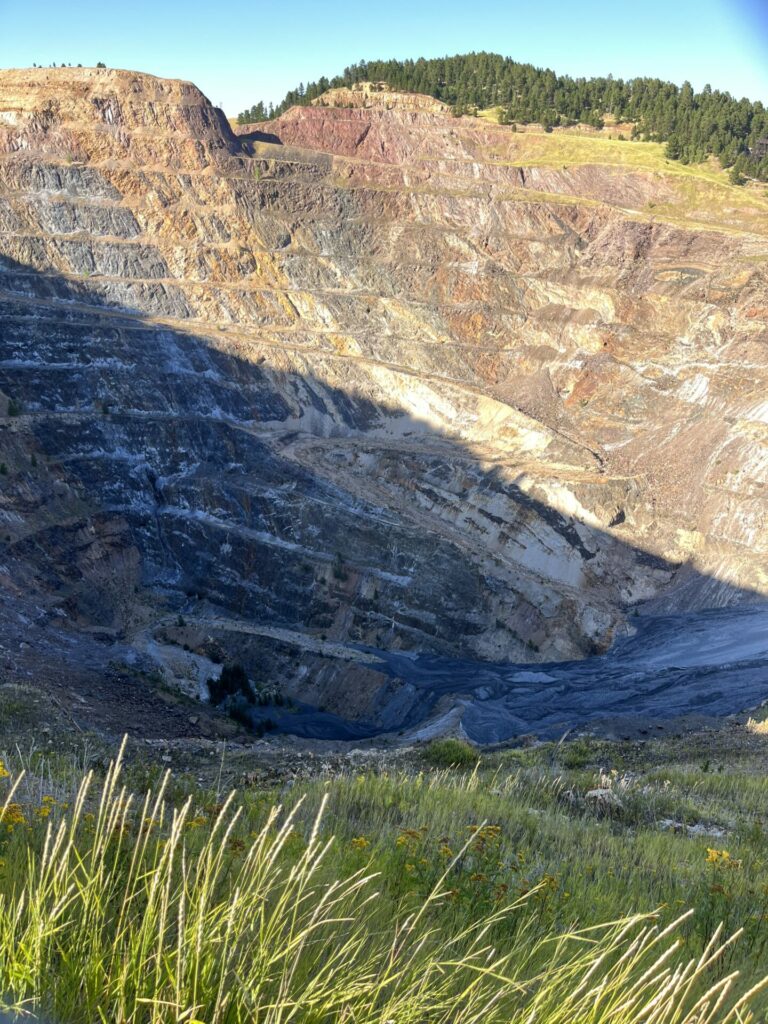
The original Homestake Mine cut. It’s hard to show just how massive the hole is. The mining company eventually found expanding the cut too expensive so they sunk two huge shafts, the Yates and the Ross shafts, each around 5000 feet deep.
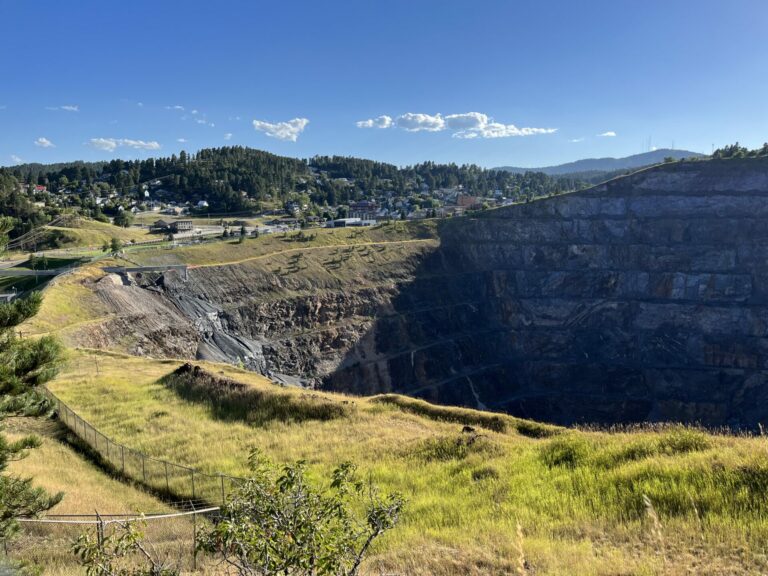
Looking back the other way across the cut towards Lead. Yep, the town is built right on the edge of the cut. This is from the Homestake trail, which has a very unassuming trailhead in the Lead dog park but is very pretty.
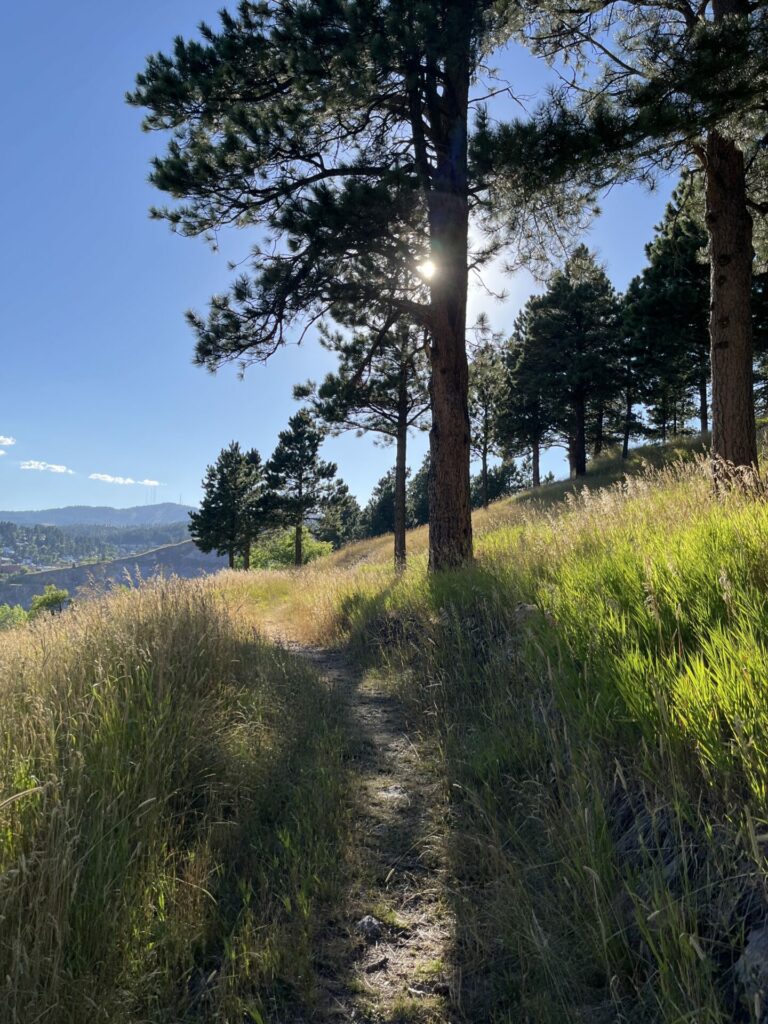
The trail itself.
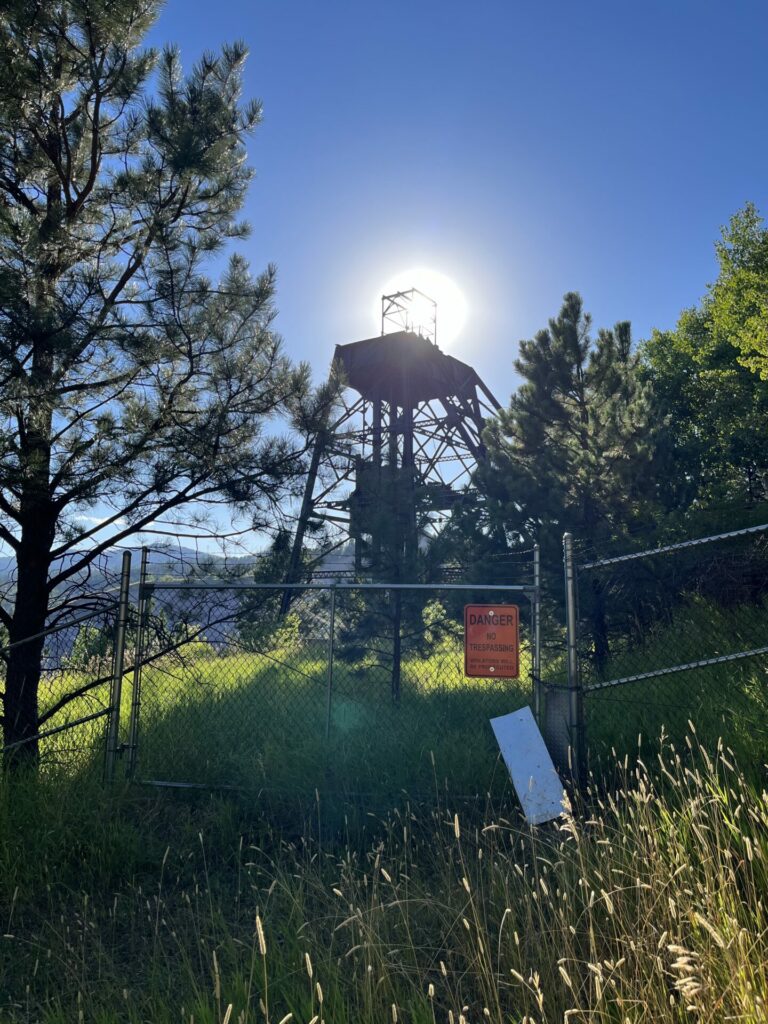
An old headframe to a shaft very near the cut. The Homestake trail switchbacks go right past the “go away there’s a huge abandoned hole here” warning fence.
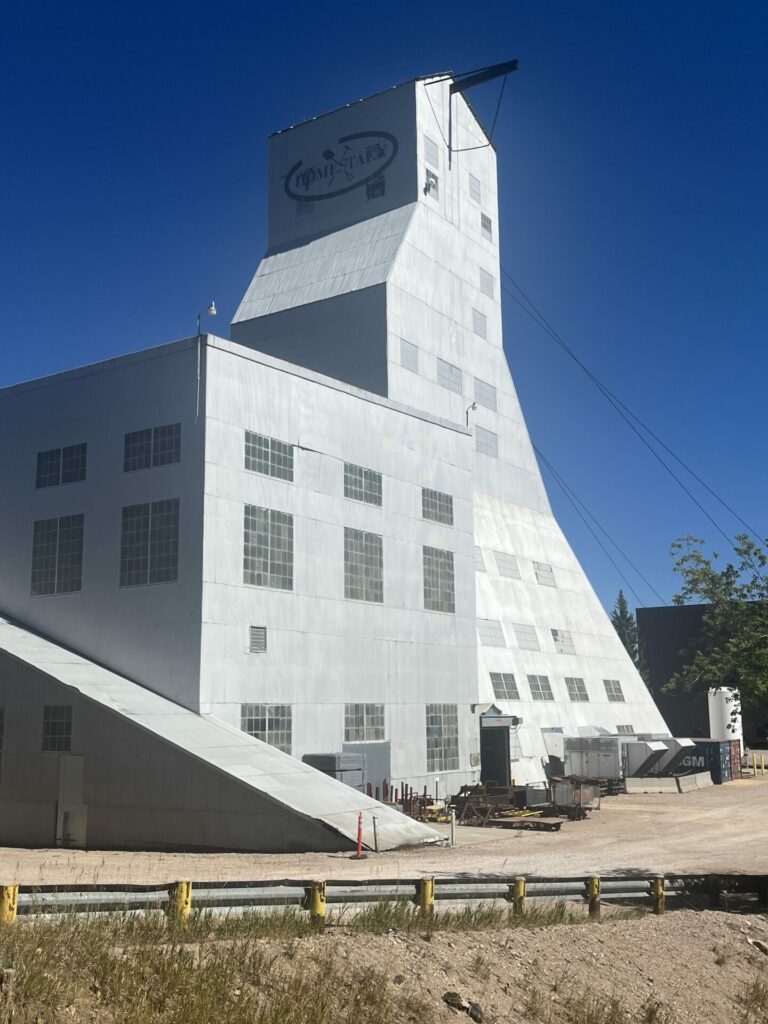
A slightly more modern headframe, to the Yates shaft. Both the Yates and Ross shafts are still working. Yates primarily serves the SURF labs hosing the LZ dark matter detector and a few other particle physics experiments. Particle physicists like to go underground to use the earth to shield our detectors from atmospheric cosmic rays, which are so numerous on earth’s surface they mess up our measurements.
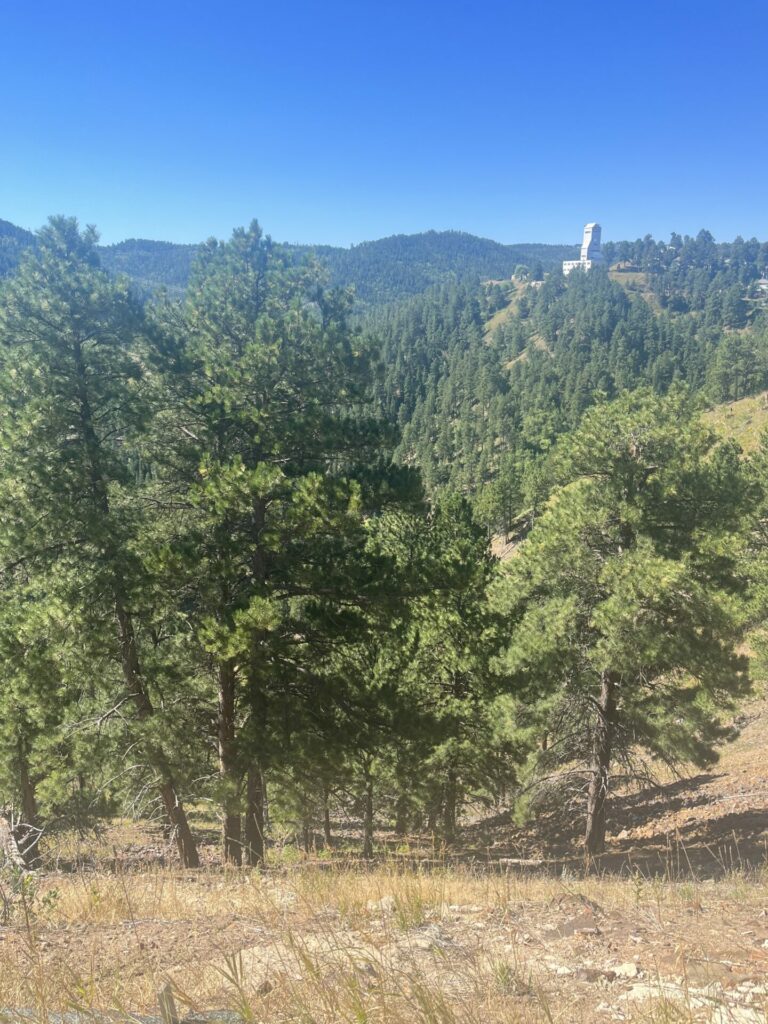
Looking from Yates towards the Ross headframe. Ross primarily serves the Deep Underground Neutrino Experiment (DUNE). SURF is currently excavating three huge caverns at the 4850 level that will host the DUNE detectors that will receive a neutrino beam from Fermilab, outside Chicago, 1300 km away.
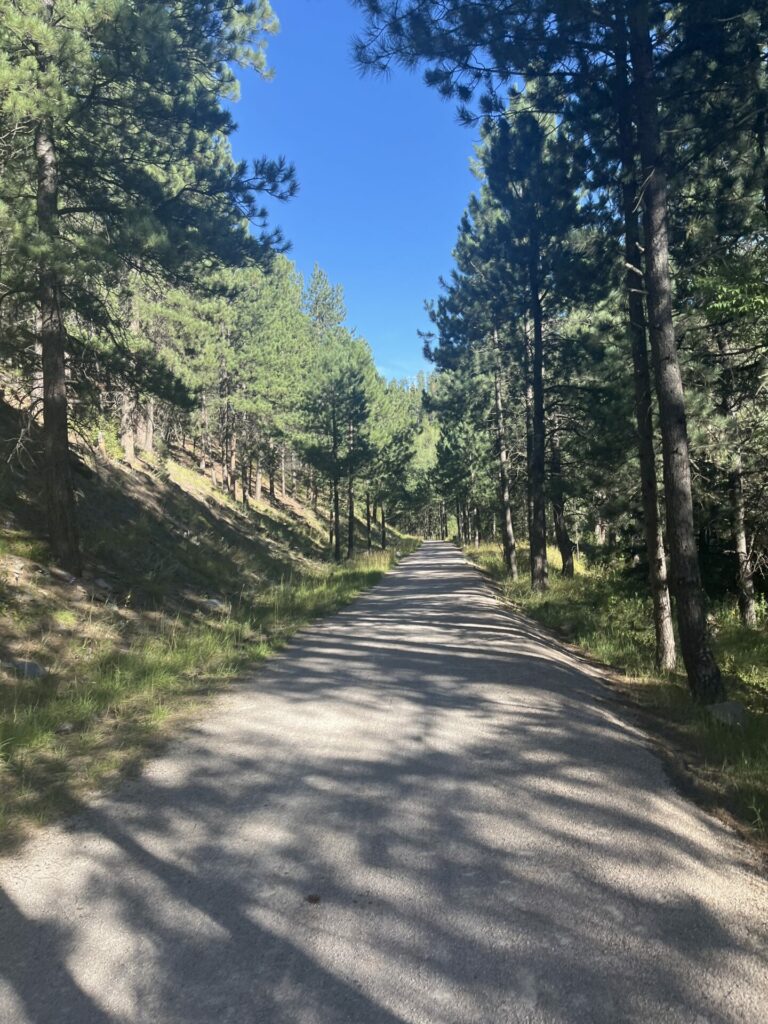
The George Michelson trail is a wide, well maintained trail perfect for biking and hiking. There are a ton of well marked trailheads all around Lead and Deadwood. This section is between the Sugarloaf and Kirk trailheads.
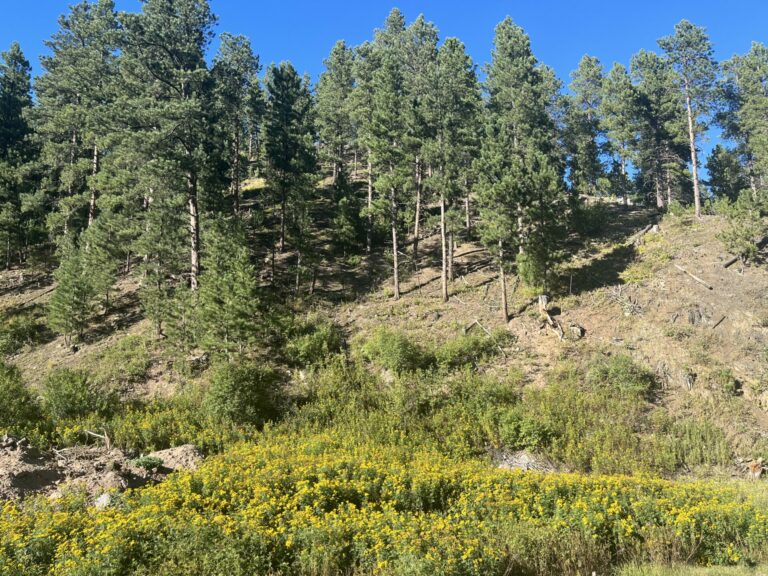
One last view from the Michelson trail. I was lucky enough to have perfect weather my entire 3 days in Lead.

Ian R
My brother in law used to work at SURF. Sometimes, you need a really deep hole in the ground to keep stuff from interfering with your experiments.
raven
So cool!
Benw
@Ian R: I know! You just want to measure stuff, but this other stuff keeps messing up your stuff!
raven
Hell yes!
p.a.
Nice! Are there any permanent positions, or are the scientists/techs transients, and what is the housing set up like?
Benw
@p.a.: the scientists are all from universities and national labs. I don’t think SURF itself keeps a scientific staff, so there’s no onsite housing. Lead is currently just a small town built around tourism. Fermilab is actually the lab that’s hiring people to be the staff based at the mine for DUNE
Booger
@Benw: What, like spice mining?
Albatrossity
Thanks for this look at the town and the mine. My eldest sister was born in Lead, in January 1949, which just happened to coincide with one of the worst blizzards in SD history. My mom apparently told my dad that they were not staying there for another winter, and they moved back to Kansas. It is a beautiful part of the country, but it can be harsh!
Ken
I wonder if during the early days anyone had to move.
“Sorry, Charlie, we’re widening it again. Maybe this time don’t build so close to the edge?”
“But I like being close to work….”
mvr
Nice light in a lot of those photos. Looks like a nice morning for a hike.
This sort of reminds me of Butte with the mine so close by. I keep meaning to get up to that general area to go flyfishing but haven’t made it yet.
Thanks!
Xavier
The George Michelson trail is an abandoned gradebed for trains hauling ore connecting to the Union Pacific main line. It goes past the big Crazy Horse mountain carving, and is great for biking because trains don’t do steep…
CentralTexas
@Albatrossity: Our family moved from Ohio to Rapid City during that blizzard. We spend 7 days in a tiny town, Kadoka, east of Rapid City, because the roads were drifted closed. In some places the drifts looked like the Alps, 20ft or more. I was quite young at the time and had to be secured to one of my parents to cross the street to the only cafe with food. The wind was strong enough to take me off my feet and down the road.
There are many things about S Dak that I recall fondly. Shame about the current political madness.
eclare
How interesting!
JanieM
Thanks for the tour — cool to read about the repurposing for scientific research.
#3, “The trial itself,” is especially inviting. It looks like lovely country to take a walk in.
J R in WV
Old mining towns are frequently attractive tourist towns — Bisbee AZ and Tombstone AZ are two different takes on how a town can evolve into primarily tourism-driven towns after the ore plays out and the mines are no longer commercially feasible.
Bisbee was a copper boom town, also produced tons of silver, lead, and tin; the Lead also contributed pollution which eventually resulted in the removal of the topsoil, which I assume was landfilled encased with clay to keep water away. Bisbee had dozens of mines with headframes from spindly to massive iron structures. There are waste piles that dwarf any aircraft carrier ever built towering over parts of the town. There is also the Lavender Pit, a mile wide open pit right in the middle of town, with businesses right up to the edges and a state highway with tourist overlook.
Bisbee is home of a big arts community, when the mines closed, everyone went broke, quit paying taxes, and artists and hippies bought up most of the town for a pittance of back taxes, so there are B&Bs, nice restaurants, and art galleries galore, along with jeep trips around to the many headframes and abandoned mining sites. Also a trip underground into the Copper Queen mine.
Tombstone, on the other hand, is a pioneer town somewhat preserved, with bars and “brothels” doing shows and having gunfights at 1, 2, and 4 pm. There are also a couple presentations of an outdoor show called “The Shootout at the OK Corral” with ham acting and gunplay. The guys who play the Earp Brothers and Doc Holliday also wander around town all day wearing black gambler outfits. It closes up tight at 5 pm and everyone goes home after a hard days work at the saloons.
Tombstone was a sliver strike, and is some 20 or 30 miles north of Bisbee, which is right on the Mexican border. There are still small one or two man mines all around Cochise county. I was in line at a supermarket when the guy in front of me was asked by the cashier what he had been up to. “I’ve been working in my buddy john’s gold mine out Mormon Camp way!” he said. Mining country out west… There’s a 10,000 year old turquoise and an abandoned gold mine just south of where we built our winter cabin near Gleeson, with abandoned bar and dissolving adobe buildings. There is a great Ancient Peoples museum at the Dragoon exit on I-10 also.
billcinsd
I was born in Deadwood and now live in Rapid City. I work at the South Dakota School of Mines and Technology. Our physicists work in combination with SURF and the bigger universities. By the Mickelson Trail (with a k not an h) is named after the former Governor who died in a plane crash while Governor
pluky
Sweet Mother of us all! How many millennia will it take to heal that scar on the Earth?
philpm
My wife and I were just in Lead on Tuesday. We didn’t stay there very long that day, as most of the town was closed since it is past peak tourist season, but did go see the open pit. Had no idea that Stanford was using the mine now. We did enjoy what we saw of Lead a lot more than Deadwood, as Deadwood seemed to be nothing but bars, casinos and souvenir shops.